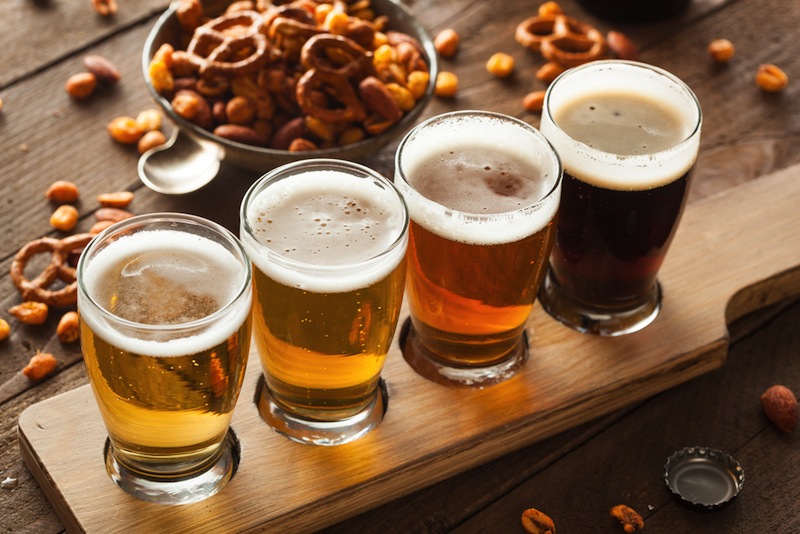Cheers! Wild Yeast Could Yield New Kinds of Beer

Beer enthusiasts, rejoice! Wild strains of yeast could one day help brewers develop new kinds of suds, including new sour ones and others that taste of honey, researchers say.
These wild microbes could also lead to new and faster ways of brewing traditional varieties of beer, the scientists added.
Yeast is a type of fungus. There are hundreds of species of these microbes, and many of them include a wide variety of strains. [Raise Your Glass: 10 Intoxicating Beer Facts]
"A lot of wild yeast used to be used in the making of beer — typically, the yeast inhabiting the breweries," said John Sheppard, a bioprocessing researcher at North Carolina State University. "These yeasts helped give breweries a unique character to their beer."
However, only a handful of yeast species are now typically used to make beer.
"Once technology was developed to control yeast cultures, it was used to make beer with increased stability — that is, shelf life," Sheppard told Live Science. "Brewers could use pure cultures of yeast, and use them over and over again without fear of contamination, and the consistency of their beers improved dramatically. A very limited number of yeast species are used to make what I would call industrial beer."
In 2014, the North Carolina Science Festival overlapped with the World Beer Festival in Raleigh, and festival organizers asked Sheppard to help brew a beer from wild strains of yeast that festival attendees could sample.
Sign up for the Live Science daily newsletter now
Get the world’s most fascinating discoveries delivered straight to your inbox.
"We had about six months to develop a new style of beer, which is not very long," Sheppard said. "I thought what would happen was that we would get a wild strain of Saccharomyces cerevisiae, the most common brewing yeast, and I would be able to make beer, but it would probably not be as good as the beer that is normally made, because the Saccharomyces cerevisiae strains that are used now for brewing have been refined over a couple of hundred years, and they're really good for making beer."
However, the wild strains of yeast worked better than Sheppard and his colleagues Rob Dunn and Anne Madden at North Carolina State University thought they would. The strain, which is seen on wasps and had never been used for commercial brewing, was able to generate significant amounts of ethanol, the kind of alcohol found in beer, wine and liquor. [11 Interesting Facts About Hangovers]
"Wild yeast is not particularly good at producing ethanol, but it turns out the strain we used was almost as good as the standard brewing strains," Sheppard said. "Unexpectedly, the beer also had a sour character to it. Sour beers are becoming more in vogue, and a lot of people seemed to enjoy it."
Sour beers such as lambics are traditionally made with a combination of yeasts and bacteria that ferment very slowly. "They are often quite expensive because they are quite time-consuming to make properly — it can take up to three years to make a proper Belgian lambic, and a lot of things can go wrong during that time," Sheppard said. In contrast, the research team's strains could produce sour beers within five days, and the brews do not rely on bacteria, which eliminates the risk of contaminating other beers in the brewery.
The researchers have also brewed beer with another wild yeast sample seen on bees that yielded flavors that tasted like honey. "A lot of people in the South like sweet beverages — probably the most common beverage is sweet tea — and people did like this beer," Sheppard said. Subsequent experiments also yielded ales that tasted like apple cider.
The scientists now want to see how many useful wild yeast strains they can find.
"Are tens of new and useful strains lurking out there? Hundreds? Thousands?" Dunn said in a statement. "We'll be figuring out the best ways to get these new strains, be they few or thousands, to the folks who can use them."
"These findings really open possibilities for using yeast, rather than added flavorings, to make new and interesting styles of beers," Sheppard said. "Most yeast strains available for brewers now don't have huge differences between them — they're only there to make ethanol."
The scientists are now collecting data that could help others use these wild types of yeast properly. For instance, they're investigating how well these types of yeast grow and what chemicals they generate. Ultimately, North Carolina State University would like to license the strains that the researchers isolated for commercial use.
Wild yeasts could also find uses beyond brewing. "There are quite a few different beverages and foods that rely on fermentation, such as sauerkraut and kimchi," Sheppard said. "Historically, these were developed using wild microbes naturally present in the raw materials. Maybe the industrial microbes used there can be replaced with better microbes we're able to isolate from nature."
However, amateurs should not attempt to cultivate wild yeast themselves, Sheppard cautioned.
"There are dangerous wild microbes out there as well," Sheppard said. "Part of our research involves identifying what a microbe is before using it for any food or beverage. We're not haphazardly using some microbe when we don't know what it is. I would caution that people not do this in their home kitchens."
Follow Live Science @livescience, Facebook & Google+. Original article on Live Science.










